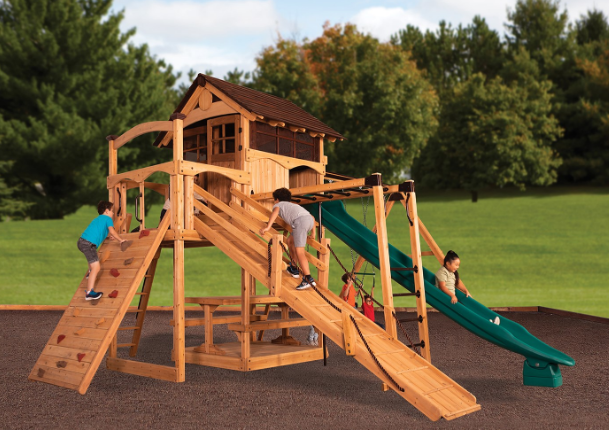An eco-friendly playground landscape not only provides a safe and stimulating environment for children but also supports sustainability and environmental preservation. This article delves into the specific characteristics and components that define an eco-friendly playground, underlining the importance of materials, design, and community impact.
Sustainable Materials and Construction
Eco-friendly playgrounds start with the choice of materials. Recycled plastic, sustainably sourced wood, and repurposed items are commonly used to minimize environmental impact. For instance, recycled plastic lumber can reduce waste in landfills and decrease the need for virgin plastic production. Studies show that using recycled materials can cut down waste by up to 75% in playground constructions. Moreover, these materials are often more durable and require less maintenance, which further reduces the playground's carbon footprint over time.
Water Conservation Features
Water conservation is another crucial element of an eco-friendly playground. Installing permeable surfaces helps manage stormwater, reducing runoff and promoting groundwater recharge. For instance, porous pavements allow water to percolate through the ground, which can decrease the burden on urban drainage systems by up to 40%. Additionally, drought-resistant landscaping around playgrounds can significantly reduce the need for irrigation, saving thousands of gallons of water annually.
Energy Efficient Solutions
The incorporation of solar-powered lighting and interactive features in playgrounds not only enhances safety after dark but also promotes renewable energy use. For example, solar panel installations on playground shelters can generate enough energy to power lights and interactive learning stations, making the playground a hub for energy education as well as play.

Community and Educational Impact
An eco-friendly playground landscape also serves as a community builder and an educational tool. By integrating local culture and ecological principles into the design, these playgrounds teach children about sustainability through play. Elements like vegetable gardens, insect hotels, and recycling stations turn play areas into dynamic learning environments that encourage children to engage with nature and understand their impact on the world around them.
Maximizing Biodiversity
Biodiversity enhancement is integral to eco-friendly playgrounds. Using native plants and creating habitats for local wildlife not only supports local ecosystems but also provides children with direct contact with nature. Research indicates that playgrounds that include natural elements can increase species diversity in urban areas by up to 50%. These spaces serve as green oases that improve air quality and provide shelter for urban wildlife.
In conclusion, eco-friendly playground landscapes play a pivotal role in modern urban planning. They offer safe, educational, and environmentally sound spaces that benefit both children and the planet. Emphasizing the use of sustainable materials, water conservation, energy efficiency, and biodiversity, these playgrounds set a standard for responsible community development. By visiting an playground landscape, you can witness firsthand the intersection of innovation, education, and environmental stewardship in creating spaces that nurture the next generation of eco-conscious citizens.